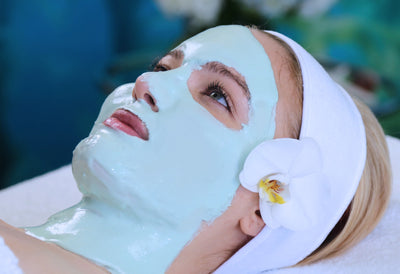What Are Facial Peels?
We get a lot of questions about facial peels, everything from “what are they” (a way to remove dead skin cells) to “are they safe to use at home?” (we discuss below). Here we’ve compiled a list of the most frequently asked questions on the subject, with answers from our top educators.
What are facial peels and how do they work?
Facial peels are a method of exfoliating your skin. Skin exfoliation refers to the process of removing dead skin cells to reveal healthier skin.
Why must you exfoliate?
While skin exfoliation is a naturally occurring process, shedding every 28 days, most skin types need some help!
Ageing skin - With age, this process slows down and causes our skin to look dull and tired looking. Using exfoliants regularly dissolves dead, flaky skin cells, and helps create a more even skin tone and clarity.
Oily skin – This skin type tends to saturate dead skin cells with excessive oil, making it difficult for dead cells to shed off naturally.
Dry skin – This skin type tends to let dead skin cells accumulate too quickly which can make skin look dry and dull.
How do facial peels differ from other forms of exfoliation?
Facial peels are composed of an acid(s) including ones that may vary in their pH value.(Without getting too scientific, the lower the pH value, the stronger the actual acid is.) Acids are very effective to use to exfoliate the skin, but because of their strength, acid-based peels that contain more than 10% total acid and have a pH below 3.5, should be done under the guidance of an esthetician.
While facial peels are normally based on a particular type of acid, exfoliants that you use at home may contain granular ingredients such as almonds or rice bran wax. Although they are not as strong as acids, granular methods are still excellent ways to exfoliate your skin regularly, and should be used 2-3 times a week or as recommended by your skin care professional if you are receiving professional facial peel treatments.
What categories of facial peels are there and are they safe?
Facial peels are generally categorised into 3 categories:
Deep peels – Deep peels are the most invasive and most risky. Carbonic Acid (Phenol) is a solution classically used in deep peels, but can be very painful to the skin. Most often this is performed under medical supervision. After a phenol peel, your face will be swollen and can take up to a month to fully recover.
Below is a downside to deep peels:
- Peeling
- Redness
- Irritation
- Blistering
- Swelling
- Burning
- Scarring
- Infection
- Solar Sensitivity
- Bleeding
Superficial peels – These peels are the mildest and thus safest peels for your skin. Peels containing glycolic acid, lactic acid, fruit acids, or papaya enyzmes, fall into this category. Unlike deep or medium level peels, peels at this level are not meant to require medical attention. Additionally, the purpose of these “lighter peels” is to eliminate harsh side effects that can happen with deep or medium level peels.
What to remember about facial peels?
In sum, all peels are NOT created equal. Facial peels are a very effective form of removing dead skin cells, but beware of the different level of facial peels and of the associated risks and recovery time. As always, it is best to consult a skin care professional for proper advice on in-salon and at-home options.













